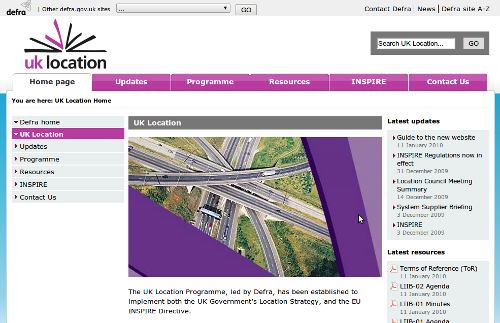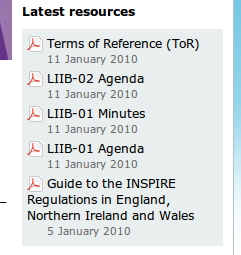I’m glad my former Microsoft colleague John McGarvey reminded me of Conservative shadow culture secretary Jeremy Hunt’s proposal of a £1m prize to develop ‘the best new technology platform that helps people come together to solve the problems that matter to them’. That’s what happens when you announce things over the Christmas holidays.
The plan is for a future Conservative government to use it ‘to throw open the policy making process to the public, and harness the wisdom of the crowd so that the public can collaborate to improve government policy. For example, a Conservative government would publish all government Green Papers on this platform, so that everyone can have their say on government policies, and feed in their ideas to make them better.’ Why does that sound so familiar? ‘There are currently no technological platforms that enable in-depth online collaboration on the scale required by Government,’ says Mr Hunt; ‘this prize is a good and cost-effective way of getting one.’
Now I don’t know what kind of ‘scale’ or ‘depth’ Mr Hunt thinks he requires. If there’s a formal brief, I’ve yet to find it – and I’d be delighted if someone could point me in the right direction.
Because I’ve been building websites allowing the public to input their views on government green and white papers for some time now. Steph Gray’s Commentariat theme kickstarted the process: and I’ve since gone on to build reusable WordPress MU-based platforms for two Whitehall departments, for a few grand each. We’ve proven WordPress can handle (literally) thousands of responses – and in the only case so far where it’s wobbled, that was because of ISP throttling rather than the ability of WordPress to handle it.
Then on the academic side, you’ve got the work that’s been done by Joss Winn and Tony Hirst et al on JISCPress / digress.it / writetoreply.org. Their focus has been on the technical side, including some early steps towards community-building. It’s a bit lacking in terms of aesthetics, and it hasn’t yet been tested with huge volumes, but it’s doing some very interesting things.
And of course, barely a month ago, you had Mr Hunt’s own people at Tory central office proving the point by turning the government’s draft IT strategy into a consultation document using WordPress. Cheap and quick, showing signs of inexperience with the platform – but good enough to receive nearly 400 contributions.
So you have several independent operations in the (wide) UK public sector, already proving in the real world that WordPress is perfectly capable of supporting such ‘user feedback’ websites, and delivering some pretty sophisticated functionality and user experience. BuddyPress, meanwhile, continues to improve, and could certainly form the bedrock of a government-backed policy development community.
There’s no doubt in my mind that the technology is ready. And there are enough good people who have built up enough experience to collaborate on building something pretty special. For a slice of that £1m, I’m sure I could find time in my own schedule.
But the big question is… is Mr Hunt ready? What does it mean to receive large volumes of contributions from the general public? When do you ask for them? How do you deal with them? How do you ensure they’re representative? And what if you don’t like the consensus of the opinions expressed?
I’m all for the kind of revolution in policy development he seems to be proposing; and I’d be happy to play a part in it. But it isn’t the lack of a technical platform that will hold this vision back. If anything, that’s the easiest part.
PS Just a thought… whither Tom Steinberg?

 The site is closely modelled on the Defra corporate site, even going so far as to use the same base stylesheet. Behind the scenes, it’s the usual combination of WordPress posts and pages, with the former handling news updates, and the latter everything else. Inevitably we were looking at lots of downloadable PDFs and Office documents; so I’ve done a custom ‘widget’ to display the latest file uploads (excluding images), with the appropriate filetype icons.
The site is closely modelled on the Defra corporate site, even going so far as to use the same base stylesheet. Behind the scenes, it’s the usual combination of WordPress posts and pages, with the former handling news updates, and the latter everything else. Inevitably we were looking at lots of downloadable PDFs and Office documents; so I’ve done a custom ‘widget’ to display the latest file uploads (excluding images), with the appropriate filetype icons.

 It’s now two years since DCSF published their Children’s Plan – I know – and Ed Balls wants to know what impact it has had on you. They’ve published a
It’s now two years since DCSF published their Children’s Plan – I know – and Ed Balls wants to know what impact it has had on you. They’ve published a 
